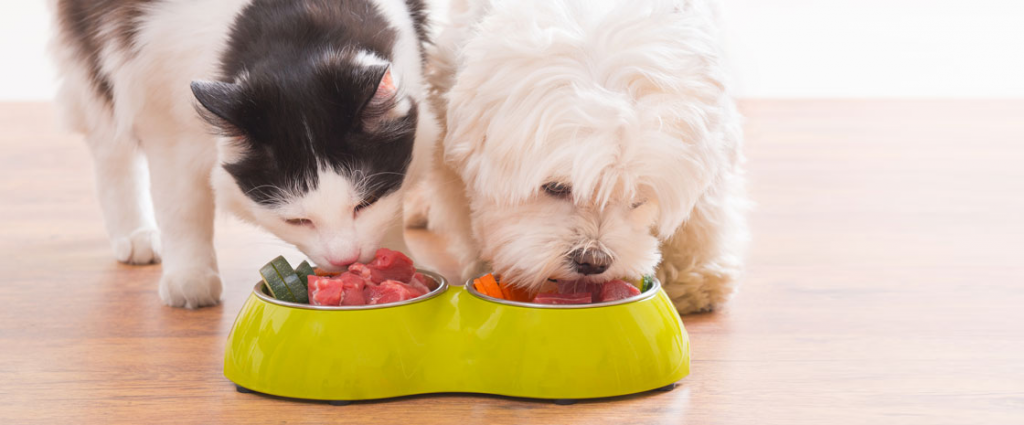How are Americans’ eating habits translating to the pet food aisle?
Gluten-free. Organic. Ingredients we can pronounce.
Human food has done a complete 180 in recent decades, turning its back on Spam®, Jell-O® and other culinary conveniences of yesteryear. Today’s Americans want their meals fresh, lean and made of interesting ingredients, harvested from the farm down the road.
Just how have our expectations for “healthy food” impacted what Americans feed their pets? Here are five examples of how human health trends and foodie fads are influencing the pet food market and some of the science behind each.
#1 Grain-Free
Gluten-free labels have become a popular sight in grocery stores nationwide. Similarly, the pet food aisle has seen grain-free sales soar with 45% of pet food products released in 2015 being “grain-free.” As human diets have moved away from carbs and gluten, pet food manufacturers have swapped grain for greens, potatoes, chickpeas and sweet potatoes. However, the nutritional value of a grain-free diet has failed to gain consensus among veterinarians. For example, some dogs benefit from the high-fiber content of grains, while others may truly have a dietary intolerance or allergy. The topic will continue to divide experts until studies are conducted to measure long-term effects on animal health.
#2 Organic & GMO-Free
As organic produce becomes a mainstay in grocery stores, non-GMO pet food products, which are often categorized as natural products, have seen growth, as well. As of 2016, organic pet food accounted for about 4% of the US market; however, it has seen popularity in certain settings. While Petco and PetSmart buy organic pet foods at a 7.1% and 5.6% rate respectively, organic options make up 9.8% of purchases for online shoppers and 8.8% of independent pet store buys.
#3 New Proteins
Although vegetarian-inclined diets have seen a bump in recent years, Americans are still focused on protein – only now the concern is not so much the amount of protein but what kind. Forty-one percent of registered dieticians feel that plant-based proteins are becoming more popular at the dinner table, and many believe that we’ll see an uptick in seafood, nuts and dairy consumption rates among humans. When it comes to pet food, dog and cat owners are looking to satiate their companions’ carnivorous instincts with novel protein alternatives. Chicken has become the “four letter word” of the pet food industry, with a caution around chicken allergies taking hold of the market. This, combined with owners’ desire to provide their pets with a variety of flavors, has inspired pet food manufacturers to begin offering exotic protein sources including bison, rabbit, kangaroo, and alligator.
#4 Local Sourcing
Americans have jumped on the farm-to-table bandwagon with newfound expectations of transparency when it comes to what our food is made of and where it comes from. The pet food industry has also seen an inclination toward products “made in the USA,” prompted, at least in part, by massive recalls of China-sourced ingredients in 2007. However, “made in the USA” labeled products can still contain “negligible foreign contents,” often including internationally sourced vitamins and minerals. Pet food products that manage to be both made in the USA and made of locally sourced ingredients capture the attention of savvy consumers in this market.
#5 Minimal Processing
As more Americans bypass Budweiser for microbrews and pick up store-prepared foods over boxed dinner kits, pet owners are also looking for minimally processed products for their four-legged friends. Today’s natural-minded pet owners are flocking to nontraditional preparations such as raw, frozen, baked, dehydrated and even freeze-dried pet foods to get a better nutritional bang for their buck. Additionally, more and more consumers are drawn to pet food brands that are upfront about processing, meaning pet food brands are looking to their manufacturers to provide unprecedented transparency as well.
Conclusion
What trends will we see in 2017? Only time will tell. But one thing’s for certain: there are no more secrets. The wall that once existed between pet food manufacturers and pet owners has been dismantled by a demand for transparency, and whether you’re proud to be organic, grain-free or made in the USA, you can bet your customers will want to know about it.
